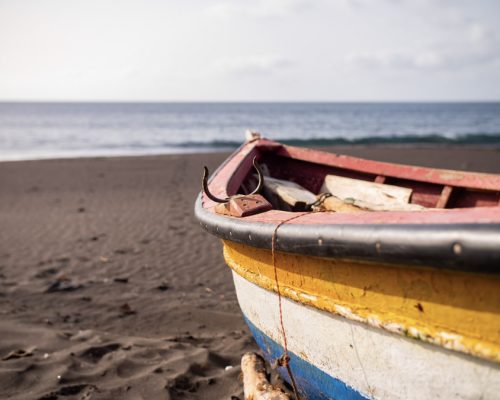
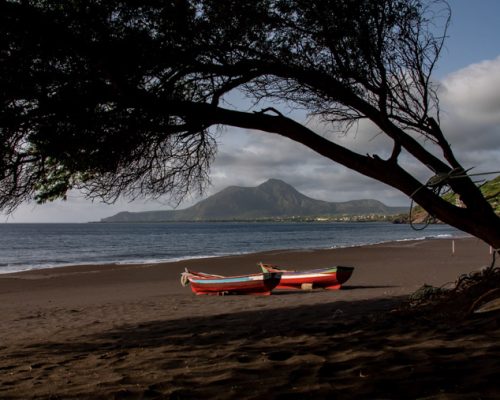
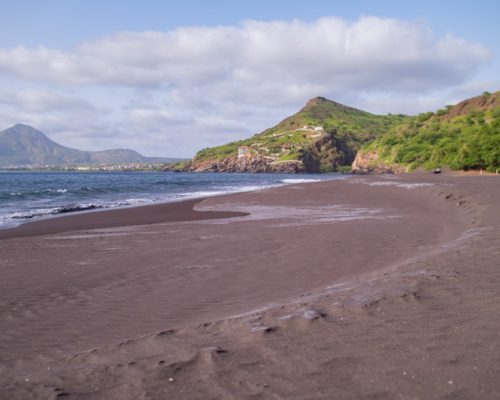
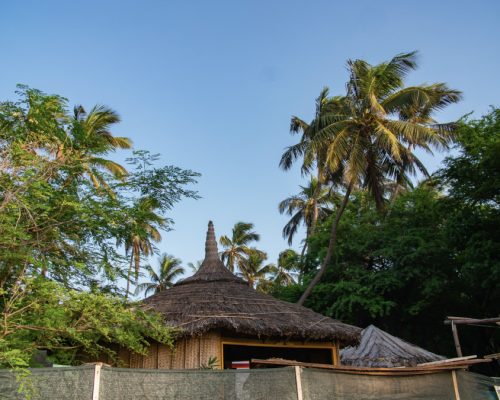
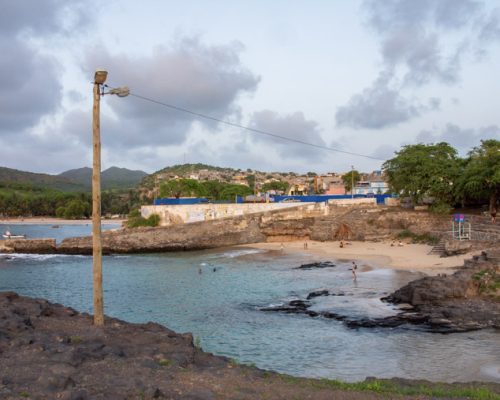
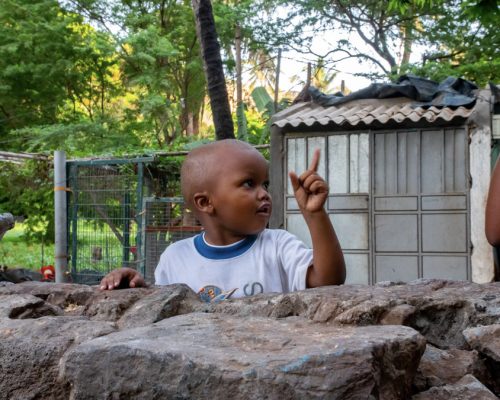
WHY we need you in Cape Verde
- Although improving, poverty and unemployment still exist in Cape Verde
- Cape Verde has limited natural resources and experiences high water shortages
- Only 10% of the land is suitable for growing crops, which can leave farmers out of jobs
- Unfortuantely there is a lot of plastic waste in Cape Verde, which affects the environment and marine life

NEED MORE INFO?
Not sure which program is right for you? Contact us for more info

SCHEDULE A CALL
Let’s talk about it! Schedule your preferred time and date to chat
HOW Can you help?
- Help protect Loggerhead sea turtles on the beautiful island of Cape Verde
- Help educate in local schools on the importance of environmental & wildlife conservation
- Create local campaigns and information leaflets for the community, about environmental awareness
- Look after and care for the injured turtles, with the hope to release them back into the wild
WHAT can you do?
- Clean the turtles tanks, feed them and ensure the centre is clean and tidy
- Learn how to collect turtle population statistics, identify turtle species, collect eggs & monitor nests
- If you’re lucky, get to release the baby hatchlings back into the sea!
- Take part in night patrols on the beach
Why Involvement Volunteers International?
- Non Profit Organisation & Charity
- Over 30 Years Expertise Globally
- Low Program Fees - From US$295
- Excellent Safety Record, In-Country 24/7 Support & Emergency Assistance
- 1 Application Fee - Multiple Countries
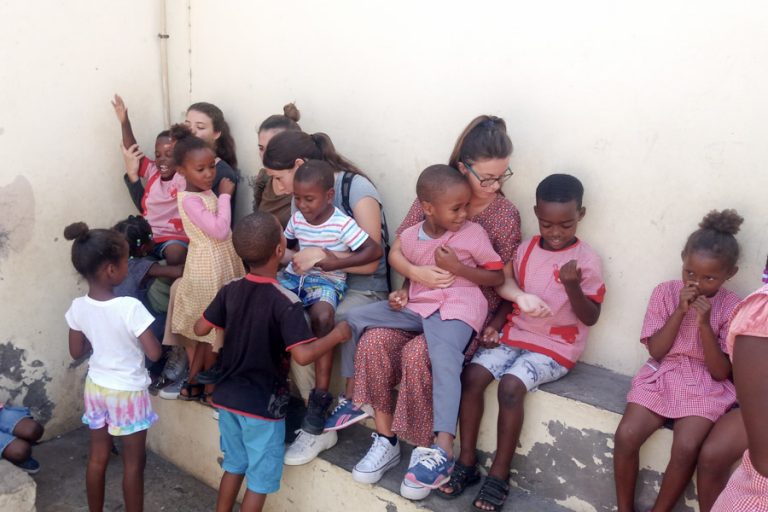
PROJECT NAME: TURTLE CONSERVATION
LOCATION: TARRAFAL, CAPE VERDE
START DATES: WEEKLY (SAT/SUN ARRIVALS)
ACCOMMODATION: VOLUNTEER HOUSE (SHARED ROOMS)
MIN DURATION: ONE WEEK
MIN AGE: 16+
SPECIAL REQUIREMENTS: N/A
PROJECT COSTS: (Please Enquire)
Overview
The beaches of Cape Verde are one of the most visited sites by the Loggerhead sea turtle (Caretta caretta) and they nest here from July to October, extending until December. These species play a critical role in the marine ecosystem and food chain, by preserving the health of sea grass and coral reef, which in turn provide food and homes for a many other sea life.
Human developments mean that the nesting space for these turtles is in danger. Coastal expansion, disturbing of nests, coastal lighting and housing expansions are creating a confusion with the turtles when they are emerging as hatchlings. There are other threats to the turtles too, such as, accidentally getting caught in fishermen’s nets, shrimp trawling and pollution. Becoming captured in fishing nets is believed the play a substantial role in the recent population decline of the loggerhead turtle.
During your volunteer project, you and locals of the community will be working to safeguard and protect the female sea turtles by:
- Patrolling the beaches at night during the nesting season.
- Transporting the eggs into a safe hatchery to protect them from animals and humans.
- Educating the community and local children about the importance of the turtles within the marine environment.
- Assisting with the government to improve regulations surrounding the topic.
- Feeding, cleaning, and taking care of hatchlings, until they are fit and strong enough to be released into the ocean.
- Beach patrol morning and night, monitoring nests and to discourage hunting.
- Data collection
- Maintaining and operating hatcheries
- Education and community activities
- Beach clean ups
We aim to educate and inspire the local youth to get involved by protecting nesting females, through direct beach protection, as well as teaching at local schools. Throughout your project you will have an important part in contributing first hand to the conservation of Loggerhead sea turtle species. You will be working alongside local field assistants to help build a more sustainable future for the island.
Although the night work can be tiring at times, you will play a valuable part in the protection of these incredible animals. During patrols, you will also be involved in tagging and measuring turtles, and relocation/ excavation of nests. There are also many other outreach programs to help out in with the local community. Throughout your time here you will gain first-hand knowledge and experience of sea turtle conservation techniques and will genuinely be making a lasting difference.
Volunteering on this project may be challenging and tiring and will include work both at night and during the day. A good level of fitness, plus physical and mental energy is required, as patrols are long (possibly all night), walking on foot with possible distances of 5 to 6 km. The normal nesting season is from July until December with hatchlings being born from mid-August until late December. The program is located at Ribera Das Pratas. During night patrols, you will be situated in field camps with very simple accommodation facilities and without power.
Location
Tarrafal (also named Mangui or Mangu), gets its name from the indigenous plant Tarrafe (Tamarix senegalensis). It is located on the Northern part of Santiago island. It is also a municipality (government town) and a fishing town.
Project Tasks
- Educate locals on the importance of environmental issues
- Clean, feed and look after various turtle species
- Assist with beach cleaning, collecting crabs and tidying the turtle centre
- Learn valuable knowledge on how to care for turtles and the best way to ensure these animals are looked after
Food & Accommodation
You will stay in our volunteer house in Tarrafal. Rooms are singer gender and shared with other volunteers (around 4-8 per room). Tea, Coffee and Drinking water are provided, as well as wifi, hot showers, lockable rooms, bed linen and fans.
There are ATMs, small supermarkets and some shops and restaurants available in the city centre.
Three meals (breakfast, lunch and dinner) during the week and two meals (breakfast, dinner) during weekends are provided. Local food is a mix of West African, European and Portuguese cuisine. Typical is fresh seafood, corns, beans, rice, potatoes, stews and vegetables. Your daily meals will contain a mix of local and various types of Western food.
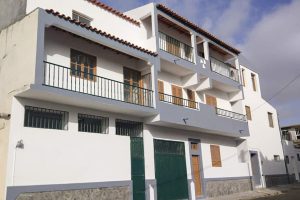
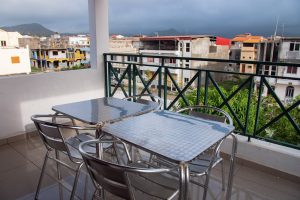

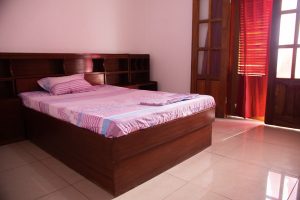

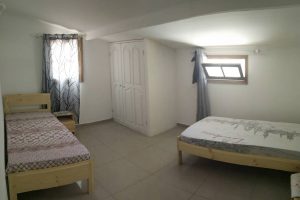


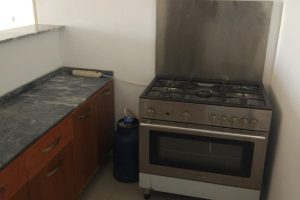

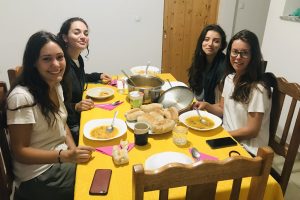
FAQ...
If you have a passion for the enviornment or would love to learn more about what we can be doing to save these precious animals, then this project is a great fit for you. For anyone who loves animals and being outdoors, close to the ocean, you will love this project!
Please Enquire.
- Accommodation
- 3 meals p/day weekdays / 2 meals p/day weekends
- Arrival airport transfer (Sat/Sun arrivals)
- Filtered drinking water, coffee & tea
- 1 day orientation
- Daily transportation to project
- In country 24/7 support & emergency assistance
- Fundraising support
- University course credits (where applicable)
- Certificate of Completion
- Airfares
- Travel Insurance
- Tours, Souvenirs & spending money
Mandatory Orientation Day
On your first Monday you will join our welcome orientation day, to get familiarised with your new surroundings, as well as the local culture. Your project will continue as usual from Tuesday and throughout the rest of the week.
Schedule
- Welcome meeting, introduction to Cape Verdean traditions and customs, general house rules, code of conduct and sorting important documents
- Basic Kriolu language lesson
- Visit to the local supermarket and ATMs, a tour of the nearby surroundings and the volunteer centre.
- Lunch
- Spend some time on Mar De President beach, before returning back to the accommodation for dinner.
By bus
“Yasi” is the name for the local minibuses, which are the most popular way to travel within the islands of Cape Verde. They can accommodate around 12 to 14 passengers. For shorter distances and in rural areas there is also the pickup trucks and cab options.
By Taxi
Taxis are frequently found in the cities of Praia and Assomada, with unique painted colours in the two cities. Taxi’s in Praia are painted in beige and taxis in Assomada are painted in white. The taxis occasionally have a meter attached, however they are rarely used, as the rates which are typically accepted are cheaper than they would be on the meter.
Monday to Friday
During June to December
1830 to 1900 – Clean the beach
1900 to 1930 – Meeting for daily activities, with station positions along the beach
2030 to 2230 – Shift 1 – Night patrol
2230 to 0030 – Rest
0030 to 0200 – Night Patrol
0200 to 0400 – Night Patrol
0400 to 0600 – Patrol to clean up the beach
During January to May
0900 – Travel to the beach
0930 to 1000 – Daily meeting
1000 to 12:00 – You will ether be cleaning and maintaining the turtle project site, tree plantation at the beach, teaching environmental awareness at the local school, designing and distributing printed pamphlets, creating informational wooden boards for the beach, promoting the importance of sea turtles in the villages around the beach or beach clean-ups.
1200 to 1400 – Lunch at the centre
1400 to 1430 – Travel to beach
1430 to 1630 – Continue with your planned daily activities
1630 to 1800 – Join in a game of beach football or volleyball with the locals.
Tarrafal Beach
Tarrafal beach is the closest to where you will be staying and is situated in a pretty cove, popular for snorkelling and diving in its deep blue waters. This is the perfect way to relax on your day off, plus it’s said to be the best beach on the island!
Santa Maria Beach
This stunning beach is one of Cape Verde’s most popular and is situated on Sal island. With golden sand and turquoise blue waters, perfect for swimming, this is the ultimate beach lover’s paradise. There are numerous hotels and restaurants nearby too.
Santa Monica Beach
This is a huge beach on Boa Vista island, stretching for 10km. Much quieter, with few resorts, this expansive beach is perfect for those looking for a more deserted place, away from tourists.
Santo Antao Island
The most Western island in Cape Verde, Santo Antao is the most ‘off the beaten track’ and packed with lush green forest, banana, papaya and mango trees, tall mountains, terrace fields and many walking trails. This island was made for a true adventure!
Pedra de Lume Salt Mines
Visit the salt mines on Sal island, where you can even soak in the salty water. They are surrounded by old volcanic craters and a pretty spectacular view.
Go Shark Spotting
Also on Sal island, is Shark Bay, where you will find groups of lemon sharks swimming up and down the coast line. You can swim out close to them as they are not harmful to humans.
Pico do Fogo
Pico do Fogo is an active volcano on Fogo island, which sits at 2829m. For those who love outdoor adventures, you can climb the peak, which will take around 3-6 hours.
Cidade Velha Old Fort
Cidade Velha old fort is situated on Santiago island (where you will be staying) and is the remains of an old fortress and town built by the Portuguese in 1462. Its situated on a hill with stunning views out over the island.
Mindelo City
This is a very pretty city, with cobbled streets, colourful colonial buildings and a relaxing harbour. Its situated on the island of Sao Vicente, which is known for its music, culture and nightlife, as well as its carnivals. Mindelo is a lively and traditional town with lots of live music during the evenings.
Praia City
This is the bustling and lively capital of Santiago island, home to a great local market selling fresh produce and spices. Here you will find many restaurants, colonial buildings and museums.
Cape Verde has many other exciting activities on offer from horse riding, quad biking, fishing, diving, snorkelling, turtle viewing, kite surfing, and sightseeing in the old colonial towns and villages.
- No extra requirements
The spectacular and diverse islands of Cape Verde were originally uninhabited, until they were discovered by Portuguese sailors in the 15th century. The country was known for its slave trade throughout the 16th and the 17th centuries but the decline of this trade in the 19th century, sent the country into economic crisis. However, the island survived, as it became an important commercial hub in the 19th century, being a perfect location for re-supply of major ships. In the present day, it still relies on these services, as well as targeting an ever-growing tourism industry.
Cape Verde’s islands can vary dramatically, some being flat, with golden sand beaches and some being mountainous and volcanic. From salt mines, volcanoes, forests, colonial towns and picturesque beaches, Cape Verde is an adventurous destination!
Cape Verde has a mild year-round climate compared to Africa’s mainland, with average temperatures of 26 °C in February and 31 °C in September. Between August and October, the country experiences irregular rainfall, with September having maximum rainfall. The islands are rich in vegetation and forests, with some being particularly dry due to their close proximity to the Sahara. The islands have a number of endemic species (mostly birds and reptiles) due to the country once being uninhabited, however these species are becoming increasingly threatened by human development.
The culture in Cape Verde is very much influenced by the Portuguese, who discovered the island, with Portuguese social and cultural patterns being displayed in some parts. Cape Verdean people are descendants from African slaves and European migrants, resulting in many of the inhabitants being of mixed race. The majority of the population are Roman Catholic, with lots of churches on the island. The locals also love a game of football!
30 Years Non Profit Experience
IVI is an Australian charity & non profit organisation founded in 1989 and is one of the pioneers of overseas volunteering successfully placing over 20,000 volunteers globally.
Affordable Volunteer Travel
Safe & Responsible Projects
Work Experience & University Credits
Check out this amazing blog with step by step info on how to raise funds for your overseas volunteer experience to help maximize your impact abroad. Guide to Fundraising
Weekends & Extra Tours
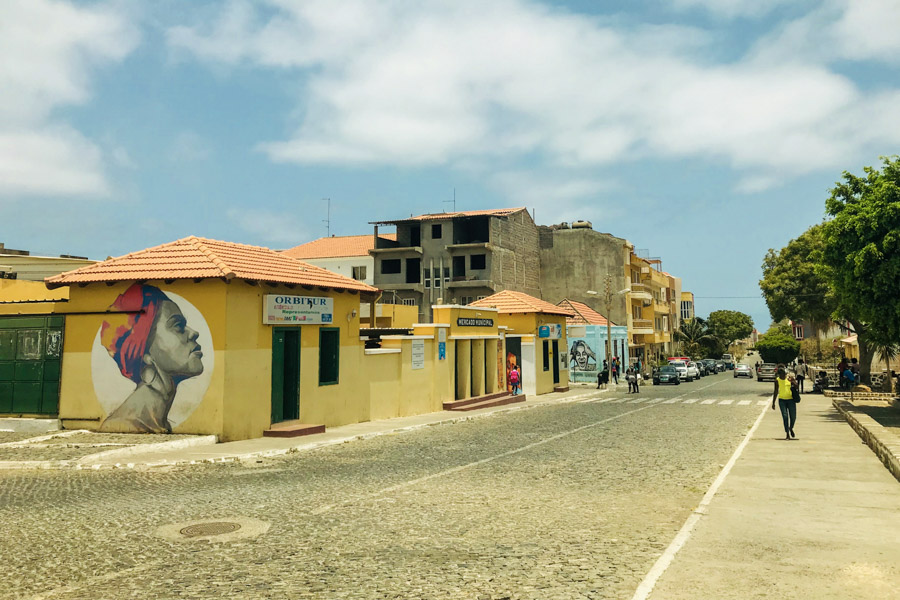

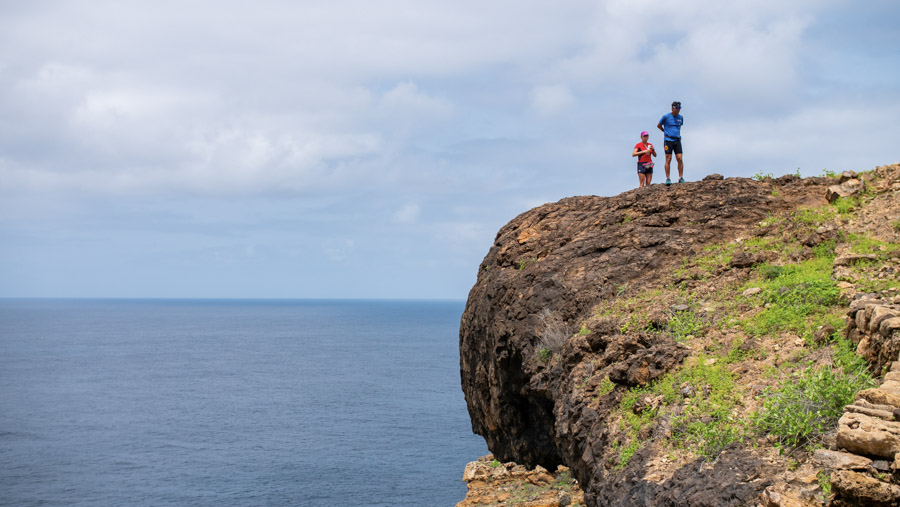


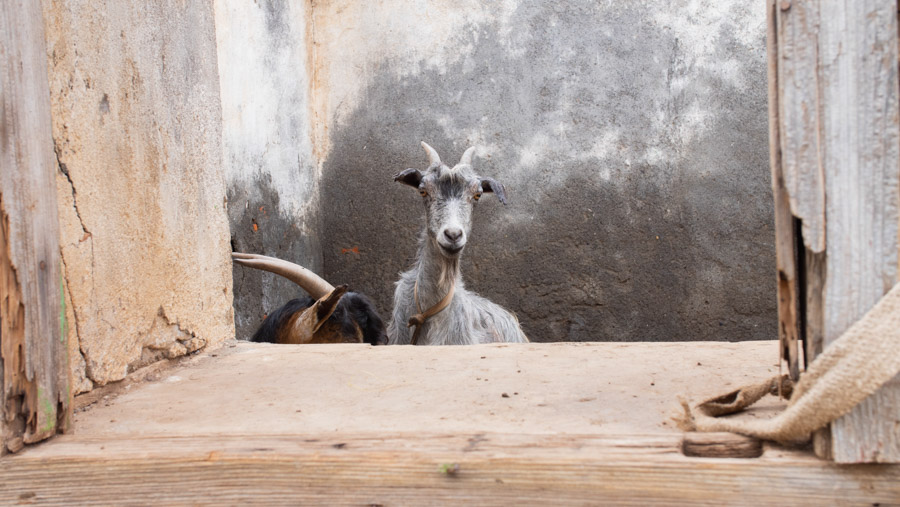
Ready to Volunteer in Cape Verde?

APPLY NOW
Ready to Volunteer abroad? Complete your application in about 5 min

NEED MORE INFO?
Not sure which program is right for you? Contact us for more info

SCHEDULE A CALL
Let's talk about it! Schedule your preferred time and date.
Some of Our Partners





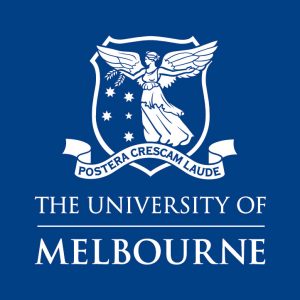













 Involvement Volunteers International
Involvement Volunteers International 